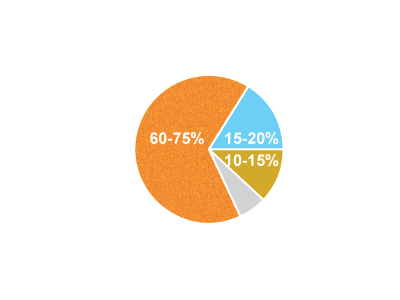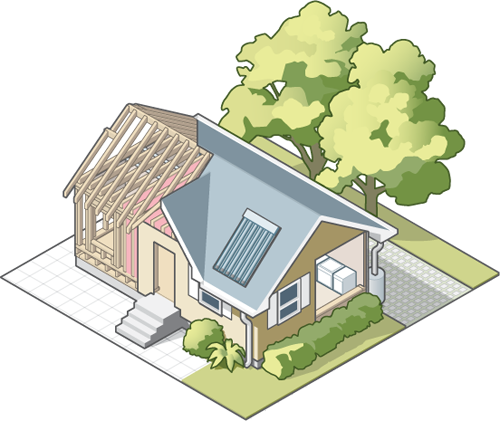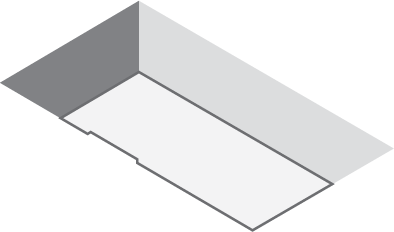
Concrete


Concrete is the most common building material in the world, and has been in use since ancient Egypt. The Romans used it extensively during their empire period. Some of the largest manmade structures in the world are made of it, including the Hoover Dam, the Three Gorges Dam in China, and the Panama Canal. It is strong, durable, and relatively inexpensive compared to other building materials.
Concrete is composed of an aggregate material such as sand or crushed rock bound with cement, which is mixed with water to activate the cement. In home building, it is sometimes mixed and poured on site for driveways, patios and walkways, but the bulk of its use is as prefabricated blocks for foundations and basement walls.
Largest consumer of natural resources
The concrete industry is the largest consumer of natural resources in the world. More than 11 billion tons are manufactured worldwide every year, which requires about 9 billion tons of aggregate, 1.5 billion tons of cement and 1 billion tons of water. Mining, processing and transporting the aggregate consumes large amounts of energy, and setting the concrete requires immense quantities of water—1 billion tons of water is 110,000 times the amount contained in San Francisco Bay, for example. The manufacturing process releases 1.5 billion tons of carbon dioxide per year, which is 5 percent of all CO2 emissions.
Portland Cement
The manufacture of Portland cement, the most common binder in concrete, is also an environmental problem. Made by roasting and grinding limestone into powder, the process consumes a lot of energy, and the chemical reaction involved releases CO2. Making a ton of cement releases a ton of CO2 into the atmosphere, and worldwide production contributes 7 percent of global CO2 emissions.
Making it green
There is no likely alternative to concrete, it is too easy to use, durable and economical as a building material. The only remedy to its environmental impact is to improve it so that it emits less CO2.
One approach is to make stronger concrete, allowing less to be used in a given application. This can be accomplished by using plasticisers, chemicals that spread the cement bonds more evenly and reduce the amount of water needed. Stronger concrete has the added advantage of being more earthquake resistant.
Another is to use fly ash, which is residue from coal-burning power stations (and from which comes the term cinder block), and slag, residue from blast furnaces, in place of Portland cement. Although these materials can’t replace Portland cement entirely, they can reduce the amount used. And recent research has already demonstrated that using 20 percent less cement than is typically used does not diminish strength.
Continued research into better mixtures and alternative ingredients will hopefully reduce the environmental impact of concrete while improving its quality and durability. Fortunately this research is supported by the cement industry itself, which would benefit from these improvements.
More topics:


About This Project
This project was researched, designed and coded by Phil Loubere and Jordan Kennedy in Middle Tennessee State University’s School of Journalism, Visual Communication concentration.




